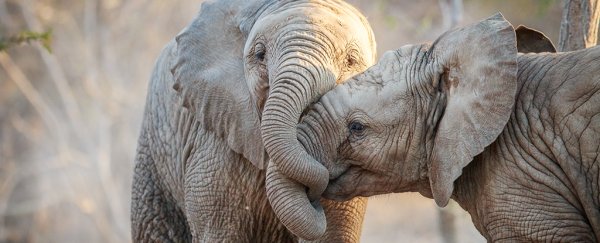When animals chat to each other, their interactions are far more human-like than you might expect. According to a comprehensive new study, many species take turns in their conversations, just like we do.
This turn-taking has long been suggested as something that separates us from the rest of the animal kingdom, but now researchers say that may not be the case after all The same patterns can be found everywhere - from the chirps of birds to the rumblings of elephants.
Having looked at hundreds of previous studies covering mammals, insects, and amphibians, the team behind the research has put forward a framework for making it easier to analyse communications that happen across multiple species.
Through that, researchers might even be able to work out how the beginnings of our own language got started.
"The ultimate goal of the framework is to facilitate large-scale, systematic cross-species comparisons," says one of the team, linguist Kobin Kendrick from the University of York in the UK.
"Such a framework will allow researchers to trace the evolutionary history of this remarkable turn-taking behaviour and address longstanding questions about the origins of human language."
Research into the talking habits of animals stretches back some 50 years, but little work has been done to draw these studies together and compare findings, which was part of the inspiration behind this new analysis.
While turn-taking is common in animals, the gaps in conversation vary. Certain songbirds wait less than 50 milliseconds before replying, while sperm whales can leave a pause of up to two seconds.
In comparison, we humans tend to leave a gap of about 200 milliseconds while we're talking, so it seems what counts as an awkward pause depends on your species.
For example, European starlings (Sturnus vulgaris) were found to actively avoid overlaps in their conversations – if overlapping does occur, it's met with silence or one of the birds flying away, so it seems to be an obvious faux pas.
Having drawn all of this data together, the researchers want to put together a way of making these studies make more sense as a whole. Part of that would be to use common terms – at the moment, for example, researchers studying songbirds can call conversations "duets", while those looking at monkeys might refer to "antiphonal calls".
Experts also need to work together to agree on rules about data capture and observations, the researchers say (like whether behaviour is observed in or out of captivity).
By spotting patterns across several studies and multiple species, we can better understand how animals talk to each other. At the same time, it'll be easier to trace the origins of human language, according to one of the researchers, Sonja Vernes from the Max Planck Institute for Psycholinguistics in the Netherlands.
"We came together because we all believe strongly that these fields can benefit from each other, and we hope that this paper drives more cross talk between human and animal turn-taking research in the future," says Vernes.
The research has been published in Proceedings of the Royal Society B: Biological Sciences.
